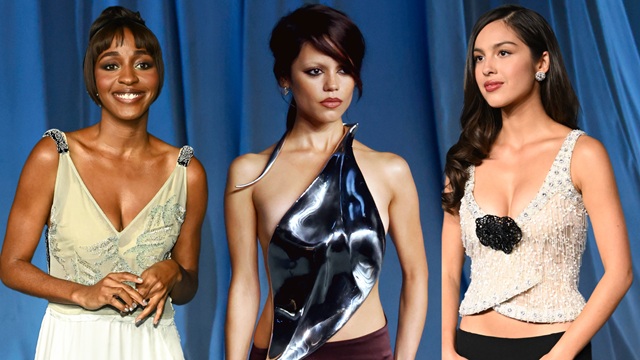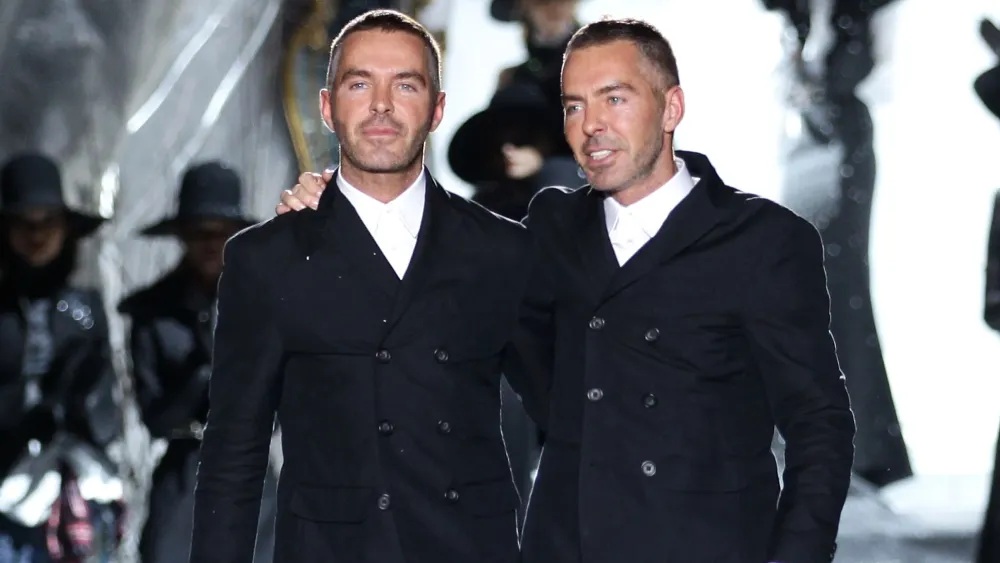Fashion Events and Collections 2025: The Future of Fashion Unfolds
The Hyères International Festival of Fashion, Photography, and Accessories—one of the most prestigious global platforms for emerging talent—took center stage in 2025, spotlighting the next generation of visionary creators. This year’s top prize was awarded to Swiss-Chilean designer Lucas Emilio Brunner, whose collection challenged the boundaries of contemporary minimalism and emotional storytelling.
Brunner’s designs spoke in whispers of nostalgia yet screamed modernity through architectural silhouettes, muted palettes, and an interplay of structured and fluid forms. His ability to bridge simplicity and sophistication captured the essence of what Hyères stands for: a dialogue between tradition and the avant-garde. The jury praised Brunner’s work for its emotional depth and commitment to craftsmanship, marking him as one of the most promising voices in the new era of sustainable fashion.
The festival also highlighted a growing focus on ecological responsibility, with most participants opting for recycled or ethically sourced materials. This underscores an ongoing transformation—fashion is no longer just about dressing the body but also about healing the planet.
Fashion Events and Collections: A Global Wave of Innovation
2025’s fashion events and collections were a whirlwind of creativity and cross-cultural collaboration. From Paris and Milan to Lagos and Seoul, designers presented not just garments but visions of the future—a world where style meets social consciousness.
-
Paris Fashion Week emphasized elegance through reinvention, with brands like Chanel and Dior exploring the concept of “modern nostalgia.” Vintage aesthetics merged with high-tech fabrics, creating a balance between memory and innovation.
-
In Milan, the energy was electric. Designers played with bold silhouettes and unconventional tailoring, turning the runway into an experimental laboratory. Gucci’s retro-futuristic collection became the talk of the town, blending 1970s glam with cyber-inspired patterns.
-
New York Fashion Week continued to celebrate inclusivity and street culture, where fashion met activism. Designers like LaQuan Smith and Telfar Clemens redefined what it means to wear confidence, drawing from urban grit and global influences.
-
Meanwhile, Lagos Fashion Week brought African creativity to the forefront, celebrating textiles, beadwork, and cultural symbolism in collections that fused ancient stories with futuristic cuts.
Together, these events painted a rich tapestry of fashion’s evolving landscape—a kaleidoscope of textures, narratives, and ideologies.
Spring 2026 Collections: The Whisper Before the Storm
While 2025’s fashion calendar still buzzes with retrospectives and reimaginings, conversations have already turned to the Spring 2026 Collections. Industry insiders and critics are calling it the “season of emotional design,” as brands prepare to merge sentimentality with sustainable innovation.
According to Vogue’s early insights, Shanghai’s street style has emerged as a major influence for the upcoming season. The city’s creative energy—where tradition meets futuristic technology—has inspired designers to explore the interplay between chaos and control, urbanity and artistry.
Streetwear continues to evolve, with oversized tailoring, fluid silhouettes, and gender-neutral forms dominating conversations. Beyond mere trends, these collections express a shift in global culture—a yearning for comfort, identity, and belonging in a fast-changing world.
Many designers have hinted that Spring 2026 will bring a softer, more personal aesthetic, focusing on tactile fabrics like silk blends, organic cottons, and reimagined denim. Expect to see vintage reinterpretations, handmade embroidery, and pastel palettes echoing emotional serenity amid modern chaos.
Technology Meets Tradition: Digital Runways and Sustainable Dreams
In 2025, fashion events embraced technology as a stage partner rather than a rival. Virtual runways, 3D garment simulations, and augmented reality fitting rooms have redefined how audiences experience fashion. The digital revolution has blurred the line between physical and virtual, giving rise to “phygital fashion”—a hybrid world where physical garments coexist with digital twins for metaverse use.
Brands like Balmain and Tommy Hilfiger used AI-generated designs and NFT-based accessories to create immersive experiences that transcend time zones. What was once a luxury reserved for in-person attendees is now a global spectacle, accessible to anyone with a smartphone.
Yet, amid all this technological advancement, the heart of fashion still beats with human touch—the intricate stitching, the emotional resonance of fabric, and the authenticity of craftsmanship. Many labels have used these platforms to champion sustainability, not as a buzzword but as a movement—a promise to reduce waste, repurpose materials, and honor the artisans behind the seams.
Emerging Designers Redefining the Fashion Narrative
Beyond the household names, 2025’s fashion events and collections gave rise to a new generation of designers redefining style narratives. These rising stars aren’t just chasing trends; they’re shaping new philosophies of design.
-
Amina Yusuf (Nigeria) fused cultural motifs with fluid tailoring, creating garments that told ancestral stories in modern silhouettes.
-
Kento Watanabe (Japan) merged street aesthetics with samurai-inspired details, pushing gender fluidity into the mainstream.
-
Elena Rossi (Italy) reintroduced handwoven techniques from small Tuscan villages, transforming heritage into haute couture.
These designers symbolize a new consciousness in fashion—a generation unafraid to challenge norms, embrace cultural fusion, and prioritize the planet over profit.
Fashion Weeks Turn into Cultural Movements
The 2025 fashion calendar transcended the traditional format of “runway shows.” Instead, fashion weeks transformed into cultural movements, merging music, art, technology, and social commentary.
In London, for instance, designers collaborated with digital artists and musicians to create immersive multisensory experiences. Runways were replaced by storytelling spaces where garments moved in harmony with soundscapes and projections.
Meanwhile, in Seoul, sustainability-themed pop-up installations allowed attendees to engage directly with recycled fabrics and interactive digital garments. These experiences not only entertained but educated audiences about conscious fashion, making awareness the new couture.
The Rise of Street Style as an Art Form
Street style, once a backstage phenomenon, has become a mainstage movement. In 2025, the streets of Tokyo, Lagos, and Shanghai became living galleries, where individuals turned sidewalks into catwalks.
Vogue’s street style coverage from Shanghai captured the pulse of the next generation—bold, unapologetic, and expressive. Oversized blazers paired with cargo skirts, metallic boots styled with embroidered jackets, and minimalist accessories dominated the aesthetic.
Street style has evolved beyond trends—it’s fashion democracy. It celebrates self-expression in its rawest form, reminding us that style belongs to everyone, not just the elite few.
Fashion’s New Language: Sustainability, Identity, and Emotion
As fashion matures, its purpose extends beyond aesthetics. The fashion events and collections of 2025 speak the language of sustainability, identity, and emotion. Brands are shifting from seasonal churn to timeless storytelling, creating pieces designed to endure rather than expire.
Designers are increasingly aware that fashion is a mirror of society—it reflects the collective consciousness, fears, and hopes of our time. In 2025, garments became metaphors for resilience, adaptability, and unity. Just as threads intertwine to form fabric, the global community continues to weave shared narratives of belonging.
Conclusion: Fashion 2025 – A Year of Evolution and Empathy
In essence, 2025’s fashion events and collections represent more than fabric and form—they symbolize a cultural renaissance. The fusion of sustainability, technology, and artistic freedom marks a turning point in the industry’s evolution.
From the quiet elegance of Lucas Emilio Brunner’s Hyères-winning collection to the vibrant pulse of Shanghai’s streetwear, fashion has redefined itself as an inclusive language—one that speaks of diversity, creativity, and humanity.
As the world anticipates the Spring 2026 Collections, one thing remains clear: fashion’s power lies not just in what we wear, but in the stories our garments tell.
FAQs About Fashion Events and Collections
1. What are the major fashion events of 2025?
Some of the most influential fashion events of 2025 include Paris, Milan, New York, and London Fashion Weeks, the Hyères International Festival, and regional showcases in Lagos, Seoul, and Shanghai that highlighted both emerging and established designers.
2. Who won the Hyères International Festival 2025?
The top prize at the Hyères International Festival 2025 was awarded to Swiss-Chilean designer Lucas Emilio Brunner for his emotionally rich, minimalistic collection that balanced craftsmanship with sustainability.
3. What trends are emerging for Spring 2026 collections?
The Spring 2026 collections will emphasize emotional design, featuring softer silhouettes, pastel tones, tactile fabrics, and gender-neutral styles inspired by Shanghai’s evolving street fashion scene.
4. How has technology influenced fashion events in 2025?
Technology played a pivotal role in digital runways, AI-generated designs, and phygital experiences, making fashion shows more immersive and accessible to global audiences while reducing waste and production costs.
5. Why is sustainability important in modern fashion collections?
Sustainability is now central to fashion’s future, encouraging brands to use eco-friendly materials, ethical labor practices, and circular design methods to minimize their environmental impact and support long-term industry growth.





